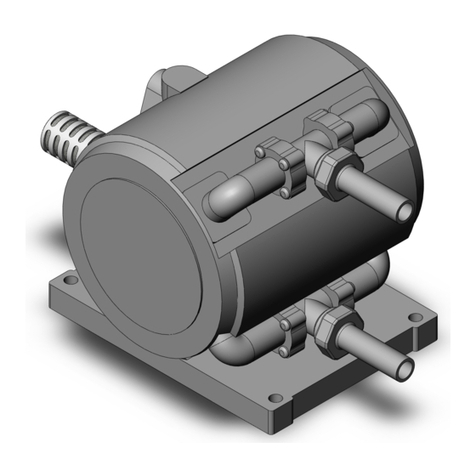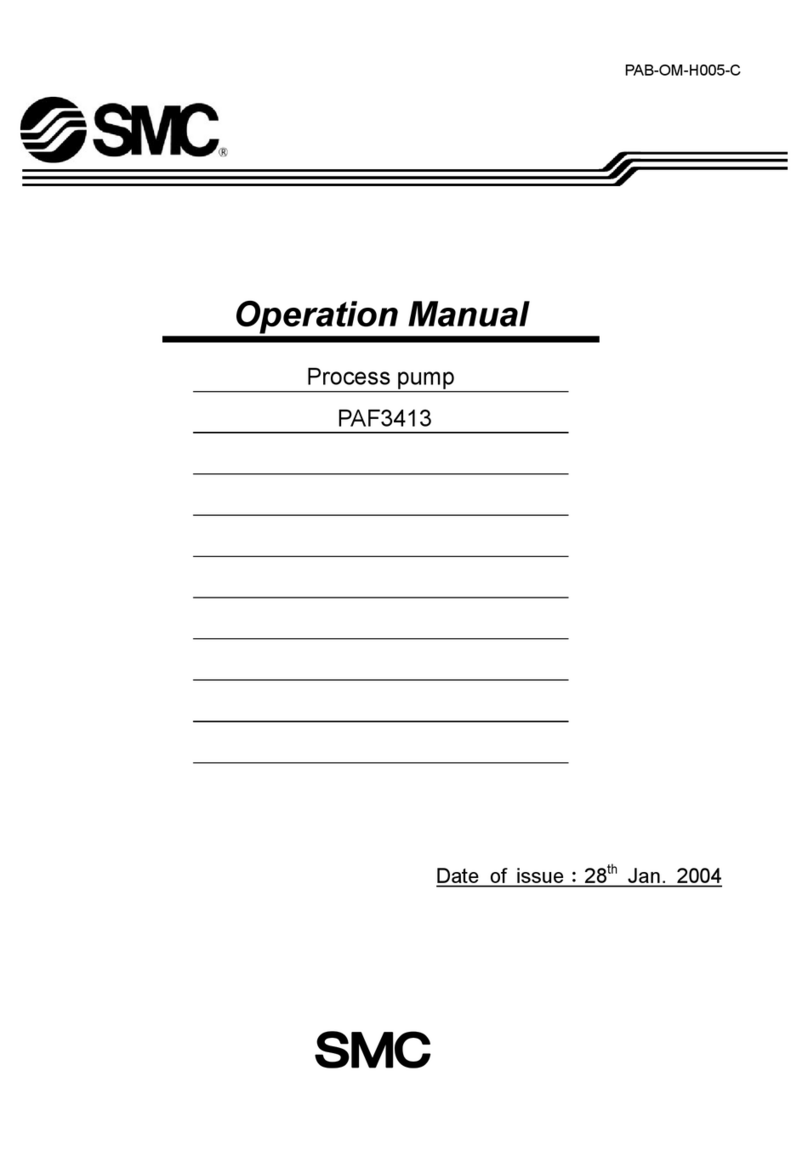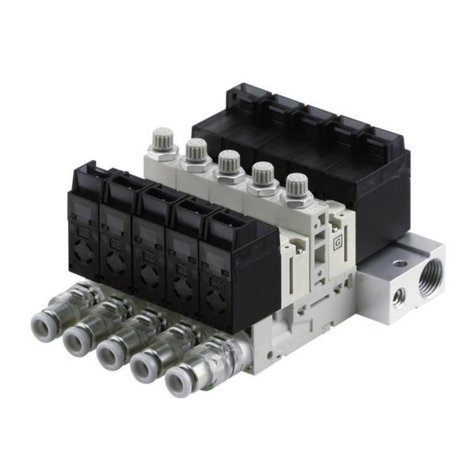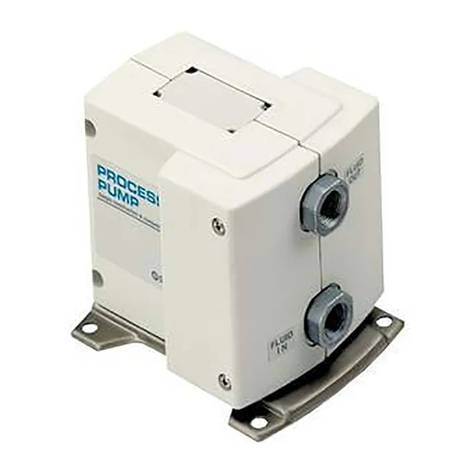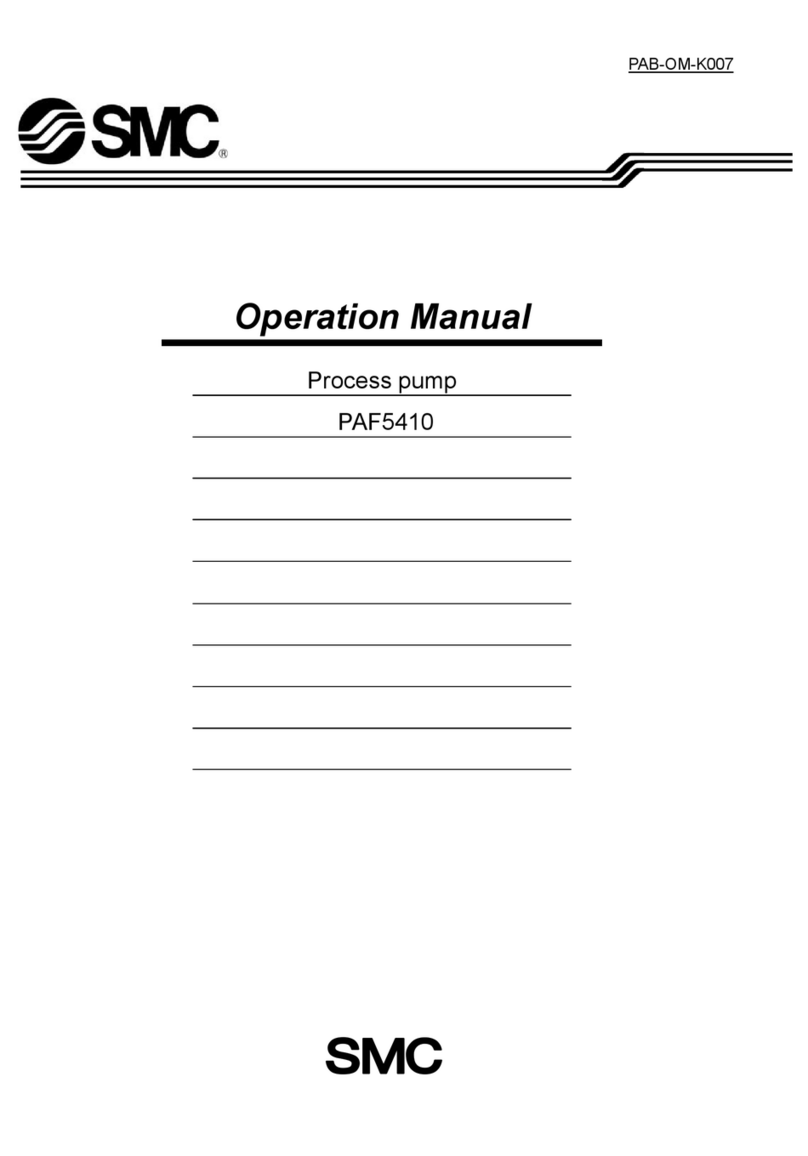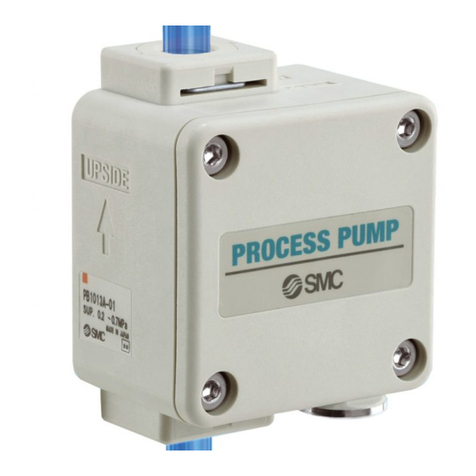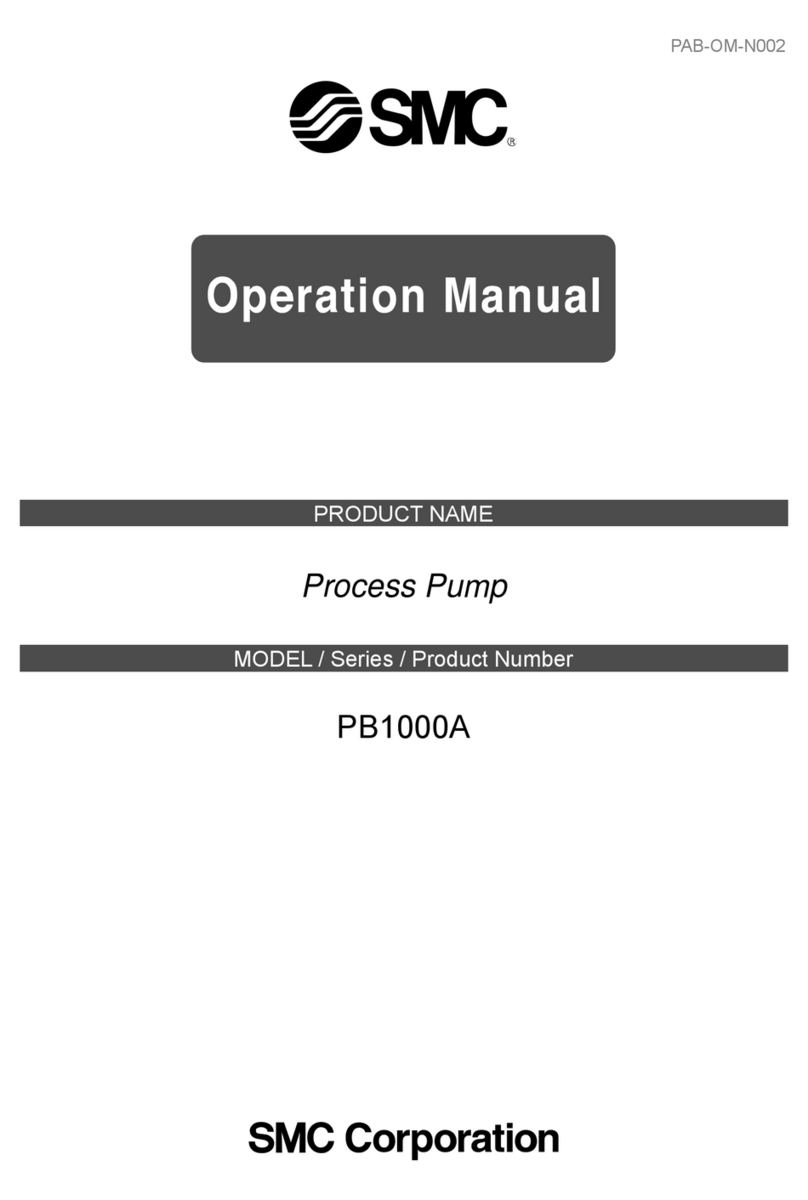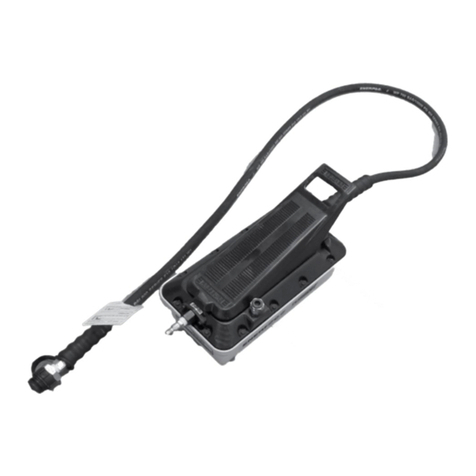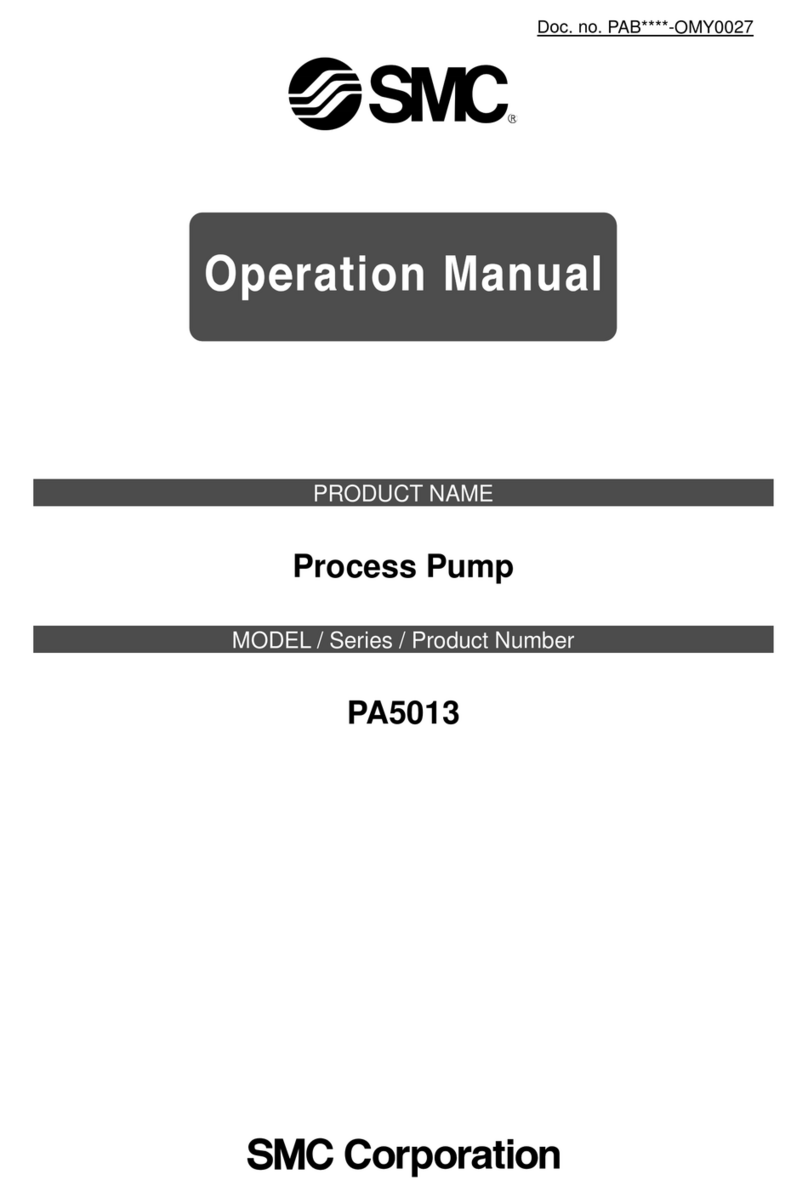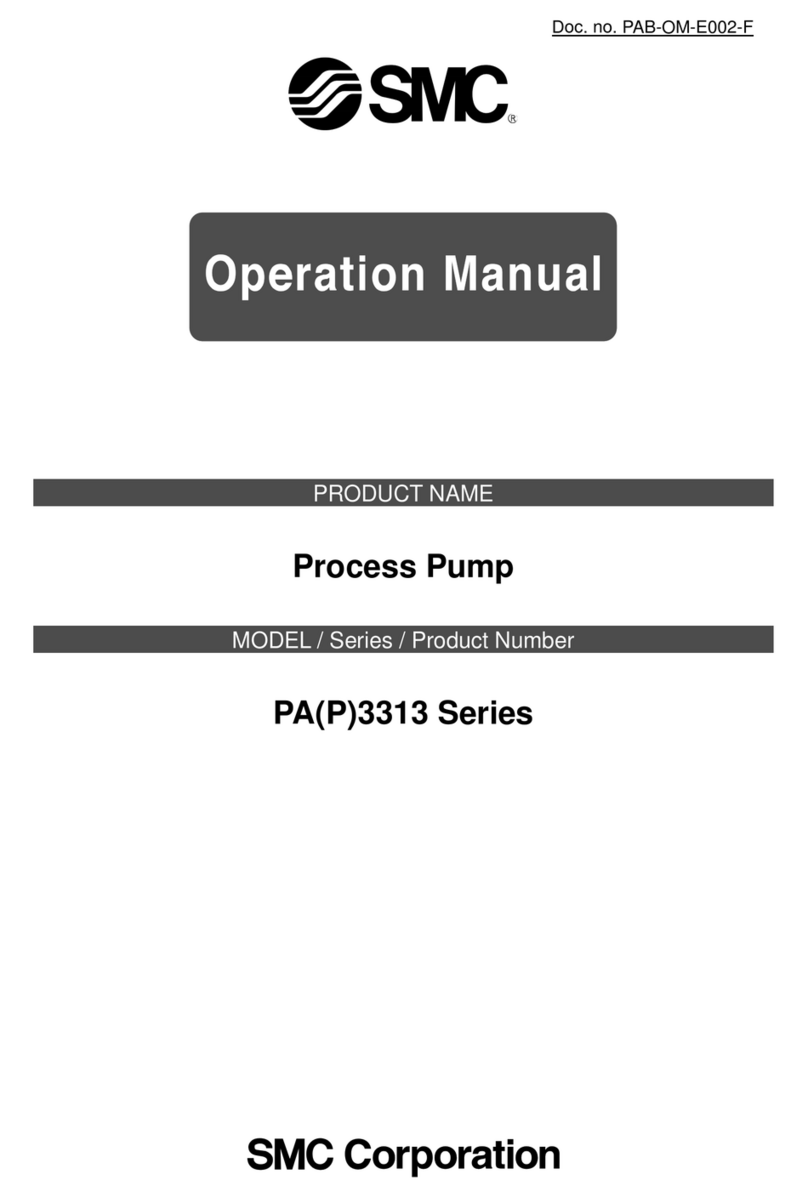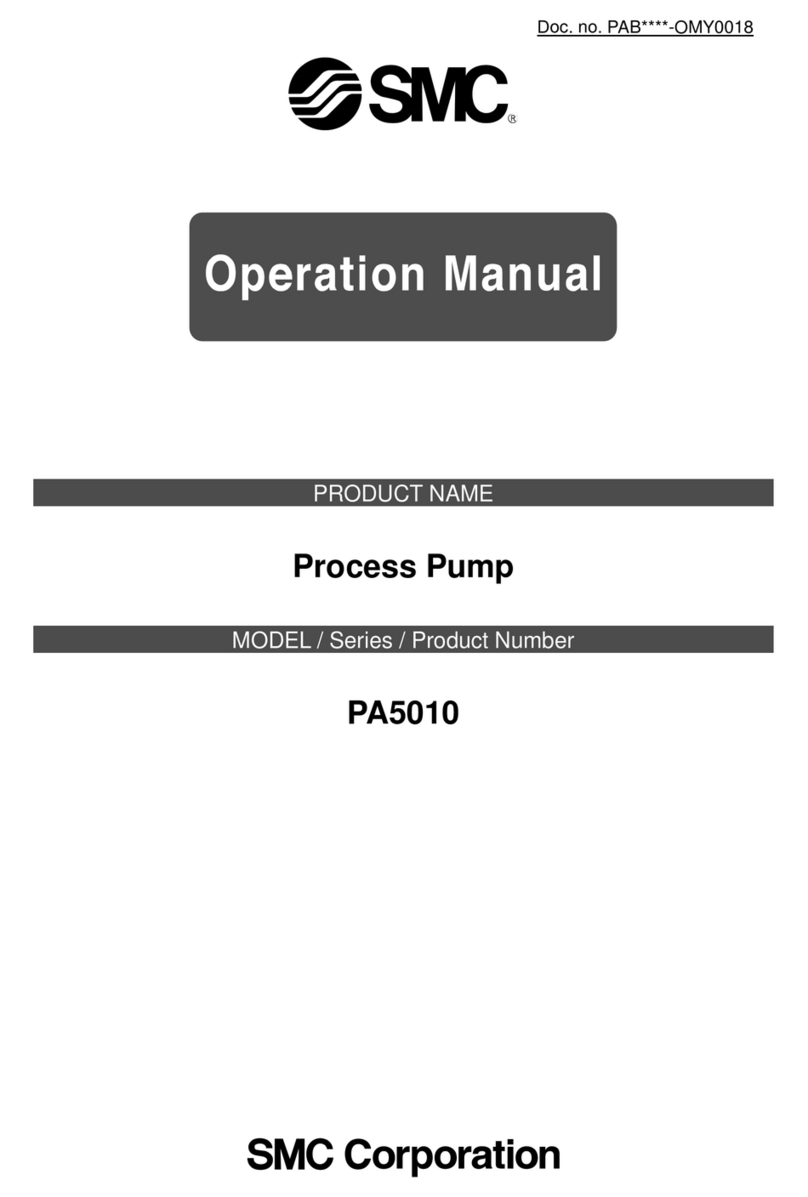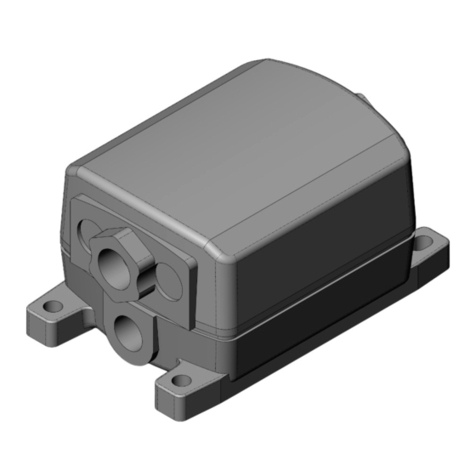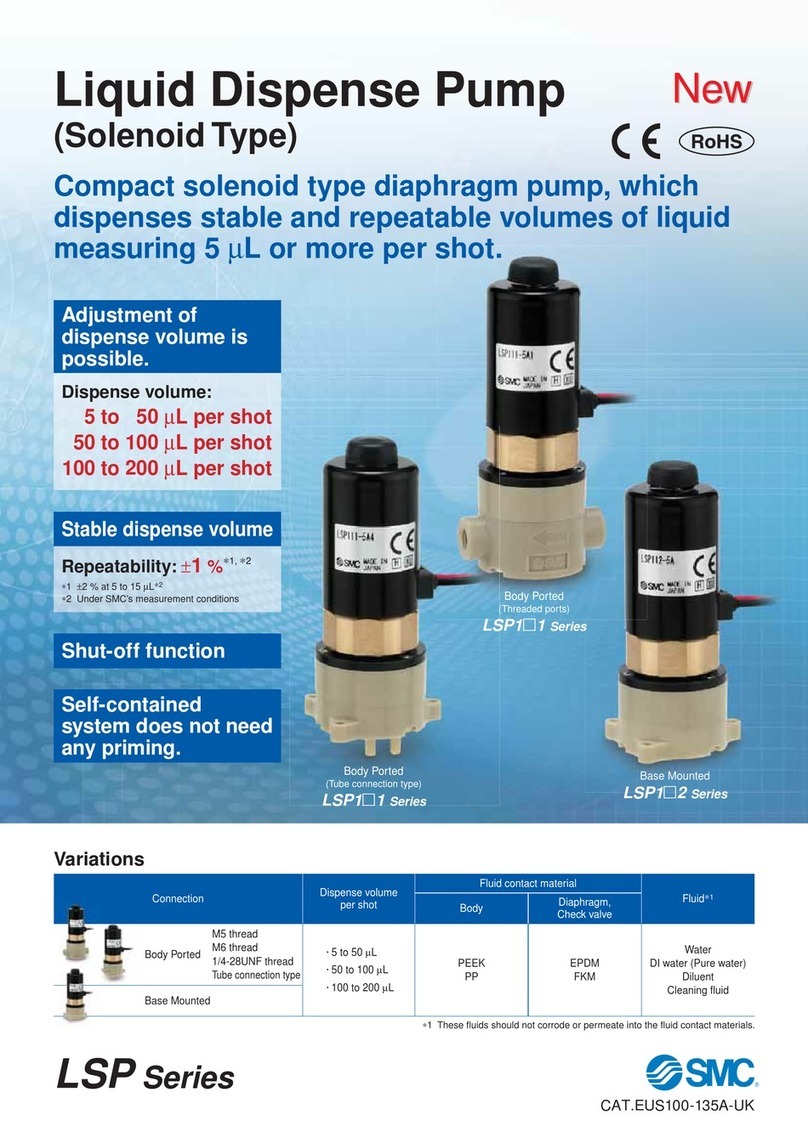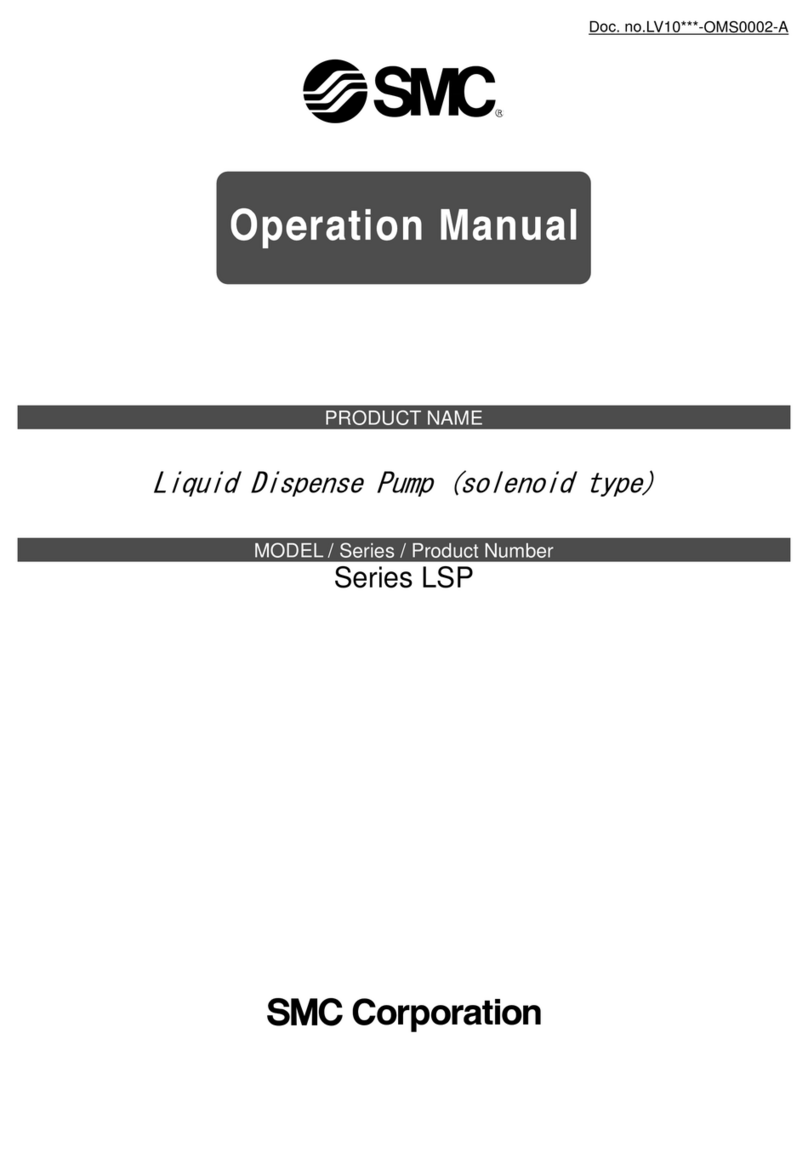1. Do not use this product in applications which may
adversely affect human life (e.g. medical equipment
connected to the human body for drip infusion).
2. Check the specifications.
Give careful consideration to the operating conditions such as
the application, fluid and environment, and use within the
operating ranges specified in this manual.
3. For stable dispensing, please use the product under
stable operating conditions (suction height, ambient
temperature, fluid temperature). If air bubbles are
present in the fluid and the piping material is soft, it
may influence on the repeatability of the dispense
volume. When the piping diameter of the fluid outlet
is large, repeatability may be influence due to
surface tension, so it is recommended to reduce the
piping diameter with the installation of a nozzle.
4. Repeatability
Measure the amount of clean water which is dispensed 10
times continuously and convert it to one shot of dispensed
volume. Repeat this measurement 10 times, and indicate the
difference (%) between the average value of 10 sets of data
(converted value of one shot) and the maximum and minimum
values. These values are calculated based on SMC
measurement conditions, so the repeatability accuracy is not
guaranteed.
<Variation in SMC measurement conditions>
Ambient / fluid temperature : ±2 degrees,
IN/OUT side piping pressure : ±0.1kPa or less
5. Fluid
Confirm the compatibility between the component material and
the fluid before using. Since the compatibility of the fluid used
may vary depending on its type, additives, concentration,
temperature, etc., give sufficient consideration when selecting
the material.
If foreign matter is mixed in the fluid, these may cause
abrasion of the inside of the pump resulting in a problem.
Install an appropriate filter (strainer) before the pump. As a
guide, the appropriate filtration is approximately 50μm.
When circulating coagulable fluids, handle them carefully so
that they do not coagulate in the pump.
6. Discharge volume may vary depending on the fluid
and piping conditions.
After mounting is complete, perform appropriate functional
inspections.
7. Maintenance space
The installation should allow sufficient space for maintenance
activities.
8. Ambient environment
Use within the allowable ambient temperature range. Make
sure that the liquid or corrosive gas does not touch the
external surface of the product. Specifically, do not expose
the solenoid to fluid. This may cause short circuit. When
touching the wet solenoid, an electric shock may occur.
9. Countermeasures against static electricity
Take measures to prevent static electricity since some
liquids can cause static electricity.
10. Energizing for extended periods of time
If the pump is continuously energized for long periods,
temperature rise due to heat generation of the coil may result in
reduced performance and shorter service life or adversely
affect the peripheral device. Therefore, if the pump is energized
for long periods, take measures to cool the pump by mounting
a fan to keep the surface temperature at 50℃or less.
When the pump is mounted into a control panel, take
measures to cool the pump and keep the operating
temperature within the specified range.
11. If the product has not been used for a long time,
perform a trial run before use. If the product is to
remain inactive for a long period of time, remove the
fluid from the pump.
12. Do not touch the pump directly with hands. The coil
can be hot depending on the ambient temperature
or energizing time. Install a protective cover over
the valve if it can be touched directly with hands.
1. If equipment does not operate properly, stop
operation.
After mounting is completed, confirm that it has been done
correctly by performing a suitable function test.
2. Mount the coil in a downward, vertical direction to
facilitate the release of air bubbles for a stable
dispensing.
After releasing air bubbles, mounting orientation is not
specified.
3. Do not use this product in a location where it will be
subject to vibration or impact. The dispense
volume may become unstable in the presence
of vibration at the pump or piping.
4. Do not apply external force to the coil section.
5. Install and operate the product only after reading
the Operation Manual carefully and understanding
its contents.
